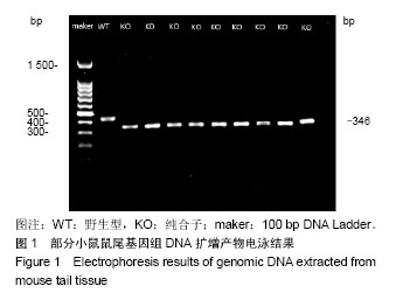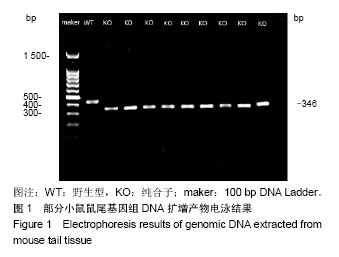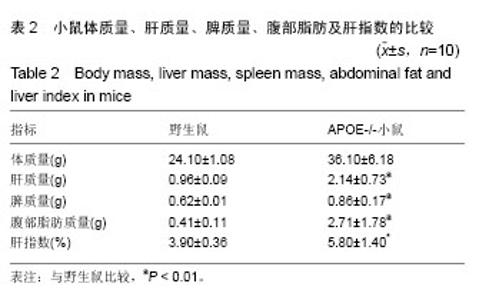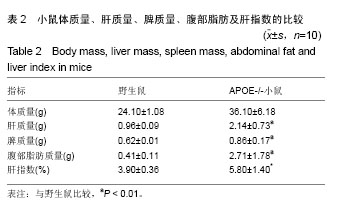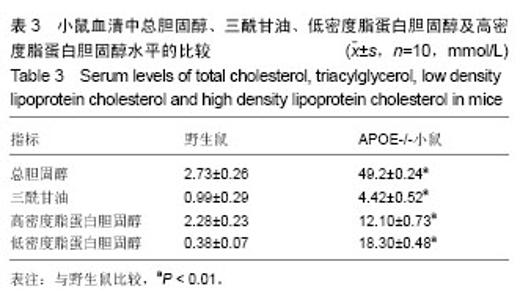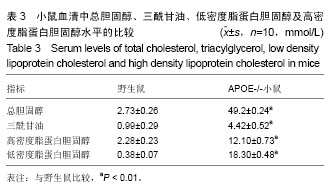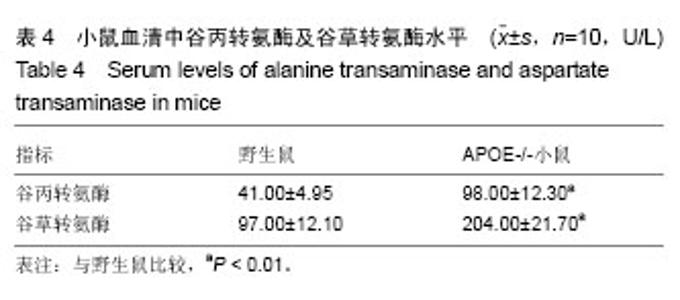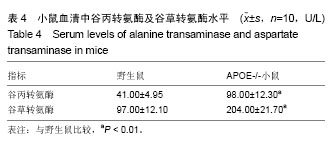| [1] Huang Y, Mahley RW. Apolipoprotein E: structure and function in lipid metabolism, neurobiology, and Alzheimer’s diseases. Neurobiol Dis. 2014;72 Pt A:3-12. [2] Tani M, MateraR, Horvath KV, et al. The influence of apo E-deficiency and LDL-receptor-deficiency on the HDL subpopulation profile in mice and in humans. Atherosclerosis. 2014;233(1):39-44. [3] 梁璐,洪瑞云,周敏,等.APOR基因敲除小鼠动脉粥样硬化模型构建[J].赣南医学院学报,2017,37(3):337-338. [4] 许增祥,谢闵,黄小梅.ApoE-/-小鼠颈总动脉斑块Fractalkine与TLR4的表达[J].中国实验动物学报,2018,23(1):76-79.[5] 熊敏,琪陈瑜,张腾.三七皂苷R1抑制ApoE基因敲除小鼠肝脏脂质沉积的作用及其机制研究[J].上海中医药杂志,2018,52(5): 65-70.[6] 朱景平,卫欣妤,许晓乐.二氢杨梅素对高脂喂养Apoe(-/-)小鼠体内胆固醇逆向转运的影响[J].中国药理学通报,2018(11): 1610-1616.[7] 耿涛,房玉涛,张云,等.新活络效灵丹对ApoE基因敲除早期动脉粥样硬化小鼠Cav-1、SR-BI的影响[J].中国中医基础医学杂志, 2018, 24(9):1212-1215.[8] 吴卫东.ApN/TNF-α信号途径在有氧运动防治ApoE-/-小鼠动脉粥样硬化过程中的抗炎症作用[J].中国老年学杂志,2018, 38(16): 3987-3989.[9] 欧海龙,张礼林,何晓兰,等.ApoE(-/-)小鼠动脉粥样硬化模型的建立[J].生命科学研究,2015,19(02):141-144.[10] 张晓明,王鹏,罗绍忠,等.普洱熟茶茶多糖对ApoE-/-小鼠动脉粥样硬化的作用研究[J].中国民族民间医药,2018,27(8):27-30.[11] 韩世飞,牟丽娜,陆芳.白藜芦醇在高脂饮食诱导ApoE基因敲除小鼠动脉粥样硬化形成中的作用及其相关机制研究[J].临床心血管病杂志,2016,32(5):505-508.[12] Moore KJ, Sheedy FJ, Fisher EA. Macrophages in atherosclerosis: a dynamic balance. Nat Rev Immunol.2013; 13(10):709-721.[13] 刘玉晖,侯贝贝,游宇,等.补阳还五汤稳定APOE-/-小鼠动脉粥样硬化易损斑块的作用机制[J].中国实验方剂学杂志,2018, 24(15): 112-114.[14] 张晓明,王鹏,罗绍忠,等.邓老冠心方对ApoE-/-小鼠动脉粥样硬化不稳定斑块NOX4的影响[J].广州中医药大学学报,2018, 35(6): 1065-1069. [15] 李振华,张英砂,周应毕,等.碱性裂解液提取DAN法在环氧化酶亚型基因敲除小鼠基因型鉴定中的应用[J].中国医学创新,2014, 11(6): 6-7.[16] 沈伟,刘湘绪,施海明,等.一种新型apoE-/-小鼠动脉粥样硬化和心肌梗死双模型的建立[J].中西医结合心脑血管病杂志,2018, 16(17): 2473-2478.[17] Nagashima M, Watanabe T, Shiraishi Y, et al. Chronic infusion of salusin-alpha and-beta exerts opposite effects on atherosclerotic lesion development in apolipoprotein E-deficient mice. Atherosclerosis. 2010;212(1):70-77. [18] Raygani A V, Rahimi Z, Kharazi H, et al. Association between apolipoprotein E polymorphism and serum lipid and apolipoprotein levels with Alzheimer's disease. Neurosci Lett. 2006;408(1):68-72. [19] 谢雪姣,徐佳,李亚梅.等.加味二陈汤对ApoE-/-小鼠脂质代谢及肝细胞形态的影响[J].中国比较医学杂志,2015,25(4):44-47.[20] 刘海红.二氢杨梅素对高脂诱导ApoE-/-小鼠肝脏损伤的保护作用及机制[J].中成药,2017,39(12):2448-2953[21] Rademakers T, van der Vorst EP, et al. Adventitial lymphatic capillary expansion impacts on plaque T cell accumulation in atherosclerosis. Sci Rep. 2017;7:45263. [22] 陈依楚,李亮,衡先培,等.丹瓜方对ApoE-/-糖尿病模型小鼠脑组织Caspase-3蛋白及Bcl-2、Bax mRNA表达水平的影响[J].中国中西医结合杂志,2017,37(12):1476-1481.[23] 王热华.白藜芦醇对糖尿病ApoE-/-小鼠动脉粥样硬化的影响及机制研究[D].广州:南方医科大学,2017.[24] 冷蔚玲.达格列净对糖尿病ApoE-/-小鼠动脉粥样硬化的作用及其机制研究[D].重庆:第三军医大学,2017.[25] 张彦,马双陶,杨永健.糖尿病合并动脉粥样硬化小鼠模型的建立[J].中国动脉硬化杂志,2014,22(2):186-189.[26] 杨小惠.ApoE4在阿尔茨海默病中的研究进展[J].临床与病理杂志, 2017,37(3):627-631.[27] 侯江淇,张欣,龙倩,等.高脂血症与Aβ的协同作用促进引发阿尔茨海默症[J].中国药理学通报,2017,33(4):498.[28] 刘钧天,崔莹雪,黄玉海,等.艾烟与香烟对载脂蛋白E基因敲除小鼠学习记忆功能与海马β淀粉样蛋白沉淀的影响[J].环球中医药, 2015, 8(5):527-531.[29] Chapman S, Michaelson DM. Spacific neurochemical derangements of brain projecting neurons in apolipoprotein E-deficient mice. J Neurochem. 1998;70(2):708-714. [30] 杨秀丽,张文高,郑广娟.脂欣康胶囊改善ApoE基因敲除小鼠学习记忆行为障碍的水迷宫观察[J].世界中西医结合杂志,2007, 2(5): 274-276.[31] 张宁,倪普,徐凌凡,等.ApoE基因敲除小鼠海马神经元内β淀粉样蛋白的表达变化[J].安徽医科大学学报,2011,46(6):531-534. |
